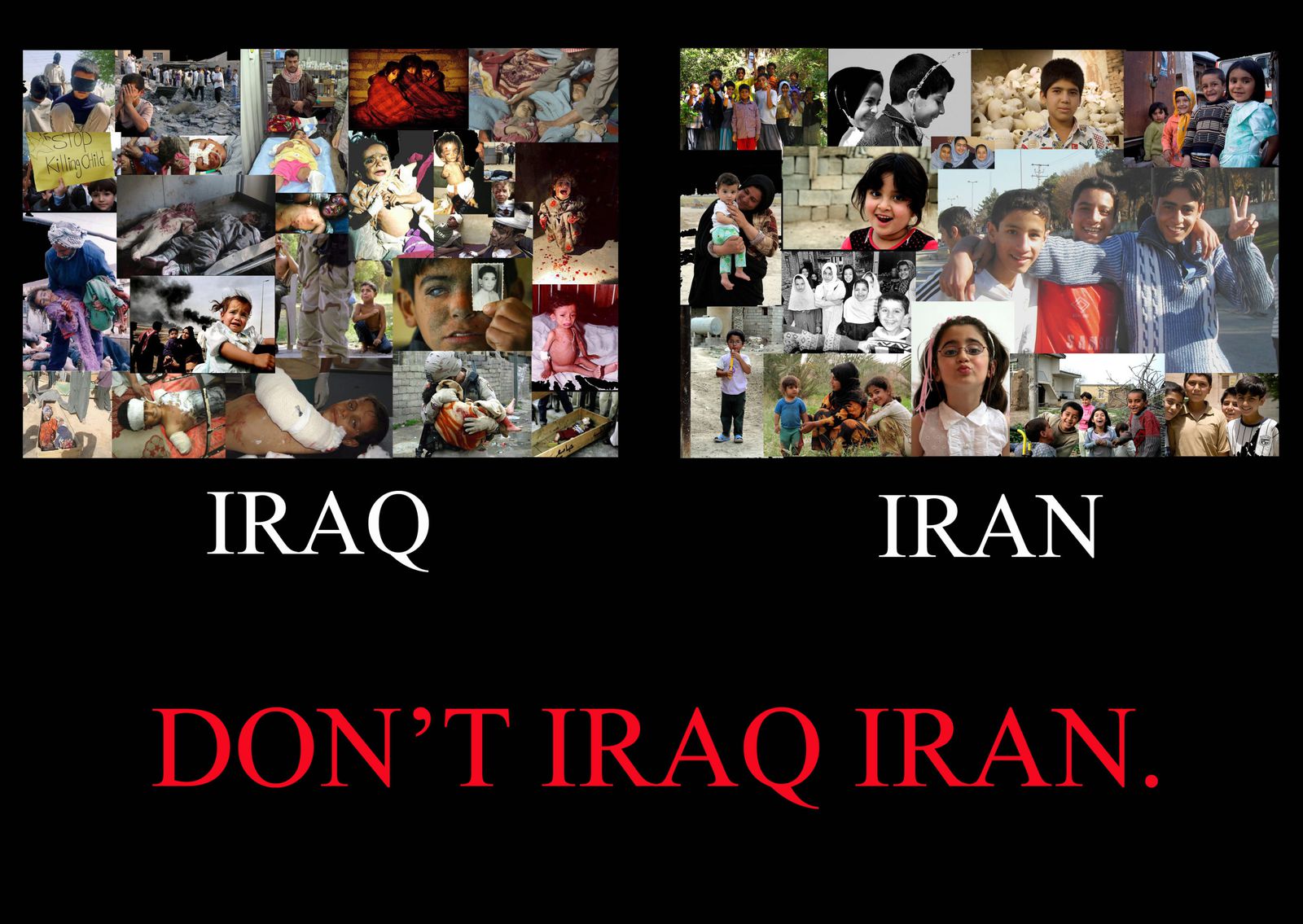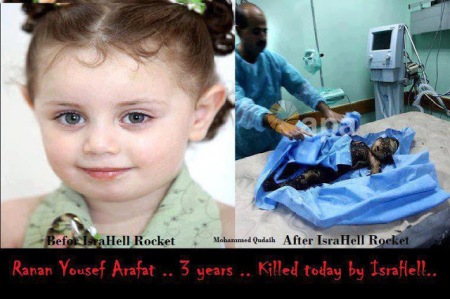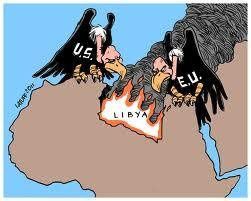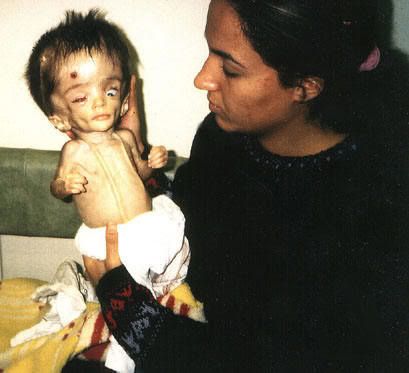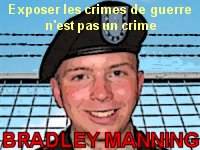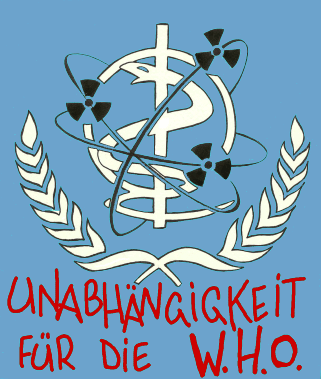Friday 15 May 2009
by Jeremy Scahill | Visit article original @ AlterNet
The "Black Shirts" of Guantánamo routinely terrorize prisoners, breaking bones, gouging eyes, squeezing testicles, and "dousing" them with chemicals.
As the Obama administration continues to fight the release of some 2,000 photos that graphically document U.S. military abuse of prisoners in Iraq and Afghanistan, an ongoing Spanish investigation is adding harrowing details to the ever-emerging portrait of the torture inside and outside Guantánamo. Among them: "blows to [the] testicles;" "detention underground in total darkness for three weeks with deprivation of food and sleep;" being "inoculated ... through injection with 'a disease for dog cysts;'" the smearing of feces on prisoners; and waterboarding. The torture, according to the Spanish investigation, all occurred "under the authority of American military personnel" and was sometimes conducted in the presence of medical professionals.
More significantly, however, the investigation could for the first time place an intense focus on a notorious, but seldom discussed, thug squad deployed by the U.S. military to retaliate with excessive violence to the slightest resistance by prisoners at Guantánamo.
The force is officially known as the the Immediate Reaction Force or Emergency Reaction Force, but inside the walls of Guantánamo, it is known to the prisoners as the Extreme Repression Force. Despite President Barack Obama's publicized pledge to close the prison camp and end torture - and analysis from human rights lawyers who call these forces' actions illegal - IRFs remain very much active at Guantánamo.
IRF: An Extrajudicial Terror Squad
The existence of these forces has been documented since the early days of Guantánamo, but it has rarely been mentioned in the U.S. media or in congressional inquiries into torture. On paper, IRF teams are made up of five military police officers who are on constant stand-by to respond to emergencies. "The IRF team is intended to be used primarily as a forced-extraction team, specializing in the extraction of a detainee who is combative, resistive, or if the possibility of a weapon is in the cell at the time of the extraction," according to a declassified copy of the Standard Operating Procedures for Camp Delta at Guantánamo. The document was signed on March 27, 2003, by Maj. Gen. Geoffrey Miller, the man credited with eventually "Gitmoizing" Abu Ghraib and other U.S.-run prisons and who reportedly ordered subordinates to treat prisoners "like dogs." Gen. Miller ran Guantánamo from November 2002 until August 2003 before moving to Iraq in 2004.
When an IRF team is called in, its members are dressed in full riot gear, which some prisoners and their attorneys have compared to "Darth Vader" suits. Each officer is assigned a body part of the prisoner to restrain: head, right arm, left arm, left leg, right leg. According to the SOP memo, the teams are to give verbal warnings to prisoners before storming the cell: "Prior to the use of the IRF team, an interpreter will be used to tell the detainee of the discipline measures to be taken against him and ask whether he intends to resist. Regardless of his answer, his recent behavior and demeanor should be taken into account in determining the validity of his answer."The IRF team is authorized to spray the detainee in the face with mace twice before entering the cell.
According to Gen. Miller's memo: "The physical security of U.S. forces and detainees in U.S. care is paramount. Use the minimum force necessary for mission accomplishment and force protection ... Use of the IRF team and levels of force are not to be used as a method of punishment."
But human rights lawyers, former prisoners and former IRF team members with extensive experience at Guantánamo paint a very different picture of the role these teams played. "They are the Black Shirts of Guantánamo," says Michael Ratner, president of the Center for Constitutional Rights, which has represented the most Guantánamo prisoners. "IRFs can't be separated from torture. They are a part of the brutalization of humans treated as less than human."
Clive Stafford Smith, who has represented 50 Guantánamo prisoners, including 31 still imprisoned there, has seen the IRF teams up close. "They're goons," he says. "They've played a huge role."
While much of the "torture debate" has emphasized the so-called "enhanced interrogation techniques" defined by the twisted legal framework of the Office of Legal Council memos, IRF teams in effect operate at Guantánamo as an extrajudicial terror squad that has regularly brutalized prisoners outside of the interrogation room, gang beating them, forcing their heads into toilets, breaking bones, gouging their eyes, squeezing their testicles, urinating on a prisoner's head, banging their heads on concrete floors and hog-tying them - sometimes leaving prisoners tied in excruciating positions for hours on end.
The IRF teams "were fully approved at the highest levels [of the Bush administration], including the Secretary of Defense and with outside consultation of the Justice Department," says Scott Horton, one of the leading experts on U.S. Military and Constitutional law. This force "was designed to disabuse the prisoners of any idea that they would be free from physical assault while in U.S. custody," he says. "They were trained to brutally punish prisoners in a brief period of time, and ridiculous pretexts were taken to justify" the beatings.
So notorious are these teams that a new lexicon was created d used by prisoners and guards alike to describe the beatings: IRF-ing prisoners or to be IRF-ed.
Former Guantánamo Army Chaplain James Yee, who witnessed IRFings, described "the seemingly harmless behaviors that brought it on [like] not responding when a guard spoke." Yee said he believed that during daily cell sweeps, guards would intentionally do invasive searches of the Muslim prisoners' "private areas" and Korans to "rile the detainees," saying it "seemed like harassment for the sake of harassment, and the prisoners fought it. Those who did were always IRFed."
"I'll put it like this," Stafford Smith says. "My clients are afraid of them."
"Up to 15 people attempted to commit suicide at Camp Delta due to the abuses of the IRF officials," according to the Spanish investigation. Combined with other documentation, including prisoner testimony and legal memos, the IRF teams appear to be one of the most significant forces in the abuse of prisoners at Guantánamo, worthy of an investigation by U.S. prosecutors in and of themselves.
The IRF-ing of Omar Deghayes
Perhaps the worst abuses in the Spanish case involve Omar Deghayes, whose torture began long before he reached Guantánamo, and intensified upon his arrival.
A Libyan citizen who had lived in Britain since 1986, in the late 1990s, Deghayes was a law student when he traveled to Afghanistan, "for the simple reason that he is a Muslim and he wanted to see what it was like," according to his lawyer, Stafford Smith. While there, he met and married an Afghan woman with whom he had a son.
After 9/11, Deghayes was detained in Lahore, Pakistan, for a month, where he allegedly was subjected to "systematic beatings" and "electric shocks done with a tool that looked like a small gun."
He was then transferred to Islamabad, Pakistan,where he claims he was interrogated by both U.S. and British personnel. There, the torture continued; in a March 2005 memo written by a lawyer who later visited Deghayes at Guantánamo, he described a particularly ghoulish incident:
"One day they took me to a room that had very large snakes in glass boxes. The room was all painted black-and-white, with dim lights. They threatened to leave me there and let the snakes out with me in the room. This really got to me, as there were such sick people that they must have had this room specially made."
Deghayes was eventually moved to Bagram Air Base in Afghanistan, where he was beaten and "kept nude, as part of the process of humiliation due to his religion." U.S. personnel placed Deghayes "inside a closed box with a lock and limited air." He also described seeing U.S. guards sodomize an African prisoner and alleged guards "forced petrol and benzene up the anuses of the prisoners."
"The camp looked like the Nazi camps that I saw in films," Deghayes said.
When Deghayes finally arrived at Guantánamo in September 2002, he found himself the target of the feared IRF teams.
"The IRF team sprayed Mr. Deghayes with mace; they threw him in the air and let him fall on his face … " according to the Spanish investigation. Deghayes says he also endured a "sexual attack." In March 2004, after being "sprayed in the eyes with mace," Deghayes says authorities refused to provide him with medical attention, causing him to permanently lose sight in his right eye. Stafford Smith described the incident:
"They brought their pepper spray and held him down. They held both of his eyes open and sprayed it into his eyes and later took a towel soaked in pepper spray and rubbed it in his eyes.
"Omar could not see from either eye for two weeks, but he gradually got sight back in one eye.
"He's totally blind in the right eye. I can report that his right eye is all white and milky - he can't see out of it because he has been blinded by the U.S. in Guantánamo."
In fact, Stafford Smith says his blindness was caused by a combination of the pepper spray and the fact that an IRF team member pushed his finger into Deghayes' eye.
The Spanish investigation into Deghayes' torture draws much from the March 2005 memo, which described several acts of abuse of Deghayes at the hands of the IRF teams. (The memo refers to IRF by its alternative acronym ERF):
ERF-ing Omar - The Feces Incident
On one of the ERF-ing incidents where Omar was abused, the officer in charge himself came into the cell with the feces of another prisoners [sic] and smeared it onto Omar's face. While some prisoners had thrown feces at the abusive guards, Omar had always emphatically refused to sink to this level. The experience was one of the most disgusting in Omar's life.
ERF-ing Omar - The Toilet Incident
In April or May 2004, when the Guantánamo administration insisted on taking Omar's English-language Quran, he objected. The ERF team came into Omar's cell and put him in shackles. He was not resisting. They then put his head in the toilet, pressed his face into the water. They repeatedly flushed it.
ERF-ing Omar - The Beating
In one ERF-ing incident, Omar was shackled by three American soldiers in their black Darth Vader Star Wars uniforms. The first was going to punch Omar, but before he could, the second kneed Omar in the nose, trying to break it. The third queried this, and the second said, "If his nose is broken, that's good. We want to break his ******* nose." The third soldier then took him to hospital.
ERF-ing Omar - The Drowning
The ERF team came into the cell with a water hose under very high pressure. He was totally shackled, and they would hold his head fixed still. They would force water up his nose until he was suffocating and would scream for them to stop. This was done with medical staff present, and they would join in. Omar is particularly affected by the fact that there was one nurse who "had been very beautiful and kind" to him to [sic] took part in the process. This happened three tim
ERF-ing Omar - Tango Block
Omar was out on the Tango block rec yard when 15 ERF soldiers came, with two other soldiers in the towers, armed with guns. They grabbed him (and others) and sprayed him.
They then pulled him up into the air and slammed his face down, on the left side, on the concrete. They had someone from the hospital there, and she just watched. She then came up to him and asked whether he was OK. He was taken off to isolation after that.
A medical examination cited in the Spanish investigation confirmed that Deghayes suffered from blindness of the right eye, fracture of the nasal bone and fracture of the right index finger, as well as post-traumatic stress disorder and "profound" depression.
Evidence Destroyed?
At the Pentagon, an official paper trail should exist that documents the IRF-ing of Deghayes. What's more, according to Gen. Miller's SOP memo, all of the actions of the IRF teams were to be videotaped as well.
After a prisoner was IRF-ed, "The medical personnel on site will conduct a medical evaluation of the detainee to check for any injuries sustained during the IRF," and, "all IRF Team members are required to submit sworn statements." These statements, reports and video were "to be kept as evidence."
As of early 2005, there were reportedly 500 hours of video; the ACLU attempted to force their release, but they never have been produced.
"Where are those tapes?" asks CCR President Michael Ratner. In some cases, the answer may well be that they never existed or no longer do. "When an IRFing took place a camera was supposed to be present to capture the IRFing," said Army Spec. Brandon Neely, who was on one of the first IRF teams at Guantánamo. "Every time I witnessed an IRFing a camera was present, but one of two things would happen: (1) the camera would never be turned on, or (2) the camera would be on, but pointed straight at the ground."
Neeley recently gave testimony to the University of California, Davis' Guantánamo Testimonials Project. He also described one IRF-ing where the video of the incident was destroyed.
Regarding the videos, Stafford Smith says, "There are some things I can't talk about, but I will confirm there is photographic evidence. I am absolutely confident that if all of the photographs were revealed to the world, they would provide irrefutable physical evidence that the prisoners had been" abused by the IRFs.
As for the "sworn statements" by IRF team members, a review of hundreds of pages of declassified incident reports reveals an almost robotic uniformity in the handwritten accounts, overwhelmingly composed of succinct portrayals of operations that went off without a hitch. Almost all of them contain the phrases "minimum amount of force necessary" and the prisoner "received medical attention and evaluation" before being returned.
"All internal investigations of Gitmo so far have completely whitewashed the IRF process," says Horton. "They did so for obvious reasons."
"The IRF program was supported by advice secured from the Justice Department suggesting that insubordinate behavior could be cited to justify a departure from guidelines against physical force. It has a conspiratorial odor to it," says Horton. "In fact the use of IRFs was illegal, a violation of Common Article 3 [of the Geneva Convention] and a violation of the Uniform Code of Military Justice, which forbids the use of unnecessary force against prisoners."
While Spain will probably pursue the role the IRF teams played in the torture of its citizens or residents, its scope goes far beyond those specific incidents.
"I have seen detainees IRF'ed while they were praying, or for refusing medication."
Deghayes' treatment at the hands of the feared IRF teams mirrors that of several other released Guantánamo prisoners.
David Hicks, an Australian citizen held at Guantánamo, said in a sworn affidavit, "I have witnessed the activities of the [IRF], which consists of a squad of soldiers that enter a detainee's cell and brutalize him with the aid of an attack dog ... I have seen detainees suffer serious injuries as a result of being IRF'ed. I have seen detainees IRF'ed while they were praying, or for refusing medication."
Binyam Mohamed, released in February, has also described an IRF assault: "They nearly broke my back. The guy on top was twisting me one way, the guys on my legs the other. They marched me out of the cell to the fingerprint room, still cuffed. I clenched my fists behind me so they couldn't take [finger]prints, so they tried to take them by force. The guy at my head sticks his fingers up my nose and wrenches my head back, jerking it around by the nostrils. Then he put his fingers in my eyes. It felt as if he was trying to gouge them out. Another guy was punching my ribs, and another was squeezing my testicles. Finally, I couldn't take it any more. I let them take the prints."
A report prepared by British human rights lawyer Gareth Peirce, documents the alleged abuse of a Bahraini citizen, Jumah al Dousari by an IRF team. Before being taken to Guantánamo, al Dousari was widely known to be "mentally ill." On one occasion, the IRF Team was called into his cell after al Dousari allegedly insulted a female soldier. Another prisoner who witnessed the incident described what happened:
"There were usually five people on an ERF team. On this occasion there were eight of them. When Jumah saw them coming, he realized something was wrong and was lying on the floor with his head in his hands. If you're on the floor with your hands on your head, then you would hope that all they would do would be to come in and put the chains on you. That is what they're supposed to do.
"The first man is meant to go in with a shield. On this occasion, the man with the shield threw the shield away, took his helmet off, when the door was unlocked ran in and did a knee drop onto Jumah's back just between his shoulder blades with his full weight. He must have been about 240 pounds in weight. His name was Smith. He was a sergeant E-5. Once he had done that, the others came in and were punching and kicking Jumah. While they were doing that the female officer then came in and was kicking his stomach. Jumah had had an operation and had metal rods in his stomach clamped together in the operation.
"The officer Smith was the MP sergeant who was punching him. He grabbed his head with one hand and with the other hand punched him repeatedly in the face. His nose was broken. He pushed his face, and he smashed it into the concrete floor. All of this should be on video. There was blood everywhere. When they took him out, they hosed the cell down and the water ran red with blood. We all saw it."
Force Feeding As a Form of Torture
The IRF teams were also used to force-feed hunger-striking prisoners at Guantánamo, including in August 2005. Deghayes was among the hunger strikers, writing in a letter, "I am slowly dying in this solitary prison cell, I have no rights, no hope. So why not take my destiny into my own hands, and die for a principle?"
While the U.S. government portrayed a situation where the hunger strikers were being given medical attention, lawyers for some of the men claim that the tubes used to force feed them were "the thickness of a finger" and "were viewed by the detainees as objects of torture."
According to attorney Julia Tarver, one of her clients, Yousef al-Shehri, had a tube inserted with "one [IRF member] holding his chin while the other held him back by his hair, and a medical staff member forcibly inserted the tube in his nose and down his throat" and into his stomach. "No anesthesia or sedative was provided to alleviate the obvious trauma of the procedure." Tarver said this method caused al-Shehri and others to vomit "substantial amounts of blood."
This was painful enough, but al-Shehri, described the removal of the tubes as "unbearable," causing him to pass out from the pain.
According to Tarver, "Nasal gastric (NG) tubes [were removed] by placing a foot on one end of the tube and yanking the detainee's head back by his hair, causing the tube to be painfully ejected from the detainee's nose. Then, in front of the Guantanamo physicians ... the guards took NG tubes from one detainee, and with no sanitization whatsoever, reinserted it into the nose of a different detainee. When these tubes were reinserted, the detainees could see the blood and stomach bile from the other detainees remaining on the tubes." Medical staff, according to Tarver, made no effort to intervene. This was one of many incidents where IRF teams facilitated such force-feeding.
Aside from hunger strikes, other forms of resistance were met with brutal reprisal. Tarek Dergoul, a prisoner interviewed by Human Rights Watch, described how IRF teams beat him because he "often refused to cooperate with cell searches during prayer time. One reason was that they would abuse the Quran. Another was that the guards deliberately felt up my private parts under the guise of searching me."
Dergoul said, "If I refused a cell search, MPs would call the Extreme Reaction Force, who came in riot gear with plastic shields and pepper spray. The Extreme Reaction Force entered the cell, ran in and pinned me down after spraying me with pepper spray and attacked me. The pepper spray caused me to vomit on several occasions. They poked their fingers in my eyes, banged my head on the floor and kicked and punched me and tied me up like a beast. They often forced my head into the toilet."
Jamal al-Harith claims he was beaten by a five-man IRF team for refusing an injection: "I was terrified of what they were going to do. I had seen victims of [IRF] being paraded in front of my cell. They were battered and bruised into submission. It was a horrible sight and a frequent sight.... They were really gung-ho, hyped up and aggressive. One of them attacked me really hard and left me with a deep red mark from my backbone down to my knee. I thought I was bleeding, but it was just really bad bruising."
The IRF-ing of Army Sgt. 1st Class Sean Baker
Ironically, perhaps the most well-publicized case of abuse by this force was not inflicted on a Guantanamo prisoner, but on an active-duty U.S. soldier and Gulf War veteran.
In January 2003, Sgt. Sean Baker was ordered to participate in an IRF training drill at Guantánamo where he would play the role of an uncooperative prisoner. Sgt. Baker says he was ordered by his superior to take off his military uniform and put on an orange jumpsuit like those worn by prisoners. He was told to yell out the code word "red" if the situation became unbearable, or he wanted his fellow soldiers to stop.
According to sworn statements, upon entering his cell, IRF members thought they were restraining an actual prisoner. As Sgt. Baker later described:
They grabbed my arms, my legs, twisted me up and, unfortunately, one of the individuals got up on my back from behind and put pressure down on me while I was face down. Then he - the same individual - reached around and began to choke me and press my head down against the steel floor. After several seconds, 20 to 30 seconds, it seemed like an eternity because I couldn't breathe. When I couldn't breathe, I began to panic and I gave the code word I was supposed to give to stop the exercise, which was 'red.' ... That individual slammed my head against the floor and continued to choke me. Somehow I got enough air. I muttered out: 'I'm a U.S. soldier. I'm a U.S. soldier.'
Sgt. Baker said his head was slammed once more, and after groaning "I'm a U.S. soldier" one more time, "I heard them say, 'Whoa, whoa, whoa,' you know, like ... he was telling the other guy to stop."
According to CBS:
Bloodied and disoriented, Baker somehow made it back to his unit, and his first thought was to get hold of the videotape. "I said, 'Go get the tape,'" recalls Baker. "'They've got a tape. Go get the tape.' My squad leader went to get the tape."
Every extraction drill at Guantanamo was routinely videotaped, and the tape of this drill would show what happened. But Baker says his squad leader came back and said, "There is no tape."
The New York Times later reported that the military "says it can't find a videotape that is believed to have been made of the incident." Baker was soon diagnosed with traumatic brain injury. He began suffering seizures, sometimes 10 to 12 per day.
"This was just one typical incident, and Baker was recognizable as an American," says Horton. "But it gives a good flavor of what the Gitmo detainees went through, which was generally worse."
IRF-ing Continues Under Obama
On Jan. 7, 2009, a prisoner named Yasin Ismael threw a shoe in frustration at the inside of a cage to which he had been confined. The guards accused Ismael of attacking them and called in an IRF team.
According to his attorneys, "The team shackled him, and he put up no resistance. They then beat him. They blocked his nose and mouth until he felt that he would suffocate and hit him repeatedly in the ribs and head. They then took him back to his cell. As he was being taken back, a guard urinated on his head. Mr. Ismael was badly injured, and his ear started to bleed, leaving a large stain on his pillow."
Less than two weeks later, on Jan. 22, newly inaugurated President Obama issued an executive order requiring the closure of Guantánamo within a year and also ordered a review of the status of the prisoners held there, requiring "humane standards of confinement" in accordance with the Geneva Conventions.
But one month later, the Center for Constitutional Rights released a report titled "Conditions of Confinement at Guantánamo: Still In Violation of the Law," which found that abuses continued. In fact, one Guantanamo lawyer, Ahmed Ghappour, said that his clients were reporting "a ramping up in abuse" since Obama was elected, including "beatings, the dislocation of limbs, spraying of pepper spray into closed cells, applying pepper spray to toilet paper and over-force feeding detainees who are on hunger strike," according to Reuters.
"Certainly in my experience there have been many, many more reported incidents of abuse since the inauguration," Ghappour said.
While the dominant media coverage of the U.S. torture apparatus has portrayed these tactics as part of a "Bush era" system that Obama has now ended, when it comes to the IRF teams, that is simply not true. "[D]etainees live in constant fear of physical violence. Frequent attacks by IRF teams heighten this anxiety and reinforce that violence can be inflicted by the guards at any moment for any perceived infraction, or sometimes without provocation or explanation," according to CCR.
In early February 2009, at least 16 men were on hunger strike at Guantanamo's Camp 6 and refused to leave their cells for "force feeding." IRF teams violently extracted them from their cells with the "men being dragged, beaten and stepped on, and their arms and fingers twisted painfully." Tubes were then forced down their noses, which one prisoner described as "torture, torture, torture."
In April, Mohammad al-Qurani, a 21-year-old Guantánamo prisoner from Chad managed to call Al-Jazeera and described a recent beating: "This treatment started about 20 days before Obama came into power, and since then I've been subjected to it almost every day," he said. "Since Obama took charge, he has not shown us that anything will change."
Al-Jazeera reported:
Describing a specific incident, which took place after change in the U.S. administration, al-Qurani said he had refused to leave his cell because they were "not granting me my rights," such as being able to walk around, interact with other inmates and have "normal food."
A group of six soldiers wearing protective gear and helmets entered his cell, accompanied by one soldier carrying a camera and one with tear gas, he said.
"They had a thick rubber or plastic baton they beat me with. They emptied out about two canisters of tear gas on me," he told Al-Jazeera.
"After I stopped talking, and tears were flowing from my eyes, I could hardly see or breathe.
"They then beat me again to the ground, one of them held my head and beat it against the ground. I started screaming to his senior 'see what he's doing, see what he's doing' [but] his senior started laughing and said 'he's doing his job.'"
In another incident after Obama's inauguration, prisoner Khan Tumani began smearing excrement on the walls of his cell to protest his treatment. According to his lawyer, when he "did not clean up the excrement, a large IRF team of 10 guards was ordered to his cell and beat him severely. The guards sprayed so much tear gas or other noxious substance after the beating that it made at least one of the guards vomit. Mr. Khan Tumani's skin was still red and burning from the gas days later."
The CCR has called on the Obama administration to immediately end the use of the IRF teams at Guantánamo. Horton, meanwhile, says "detainees should be entitled to compensation for injuries they suffered."
As the abuse continues at Guantánamo, and powerful congressional leaders from both parties and the White House fiercely resist the appointment of an independent special prosecutor, the sad fact is that the best chance for justice for the victims of U.S. torture may well be an ocean away in Madrid, Spain.
"The Obama administration should not need pressure from abroad to uphold our own laws and initiate a criminal investigation in the U.S.," says Vince Warren, CCR's executive director. "I hope the Spanish cases will impress on the president and Attorney General Eric Holder how seriously the rest of the world takes these crimes and show them the issue will not go away."
------------
Jeremy Scahill, an independent journalist who reports frequently for the national radio and TV program Democracy Now, has spent extensive time reporting from Iraq and Yugoslavia. He is currently a Puffin Writing fellow at The Nation Institute. Scahill is the author of "Blackwater: The Rise of the World's Most Powerful Mercenary Army." His writing and reporting is available at Rebel Reports.
http://www.truthout.org/051609Y
http://www.internationalnews.fr/article-32651043.html




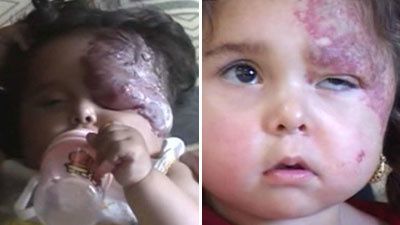
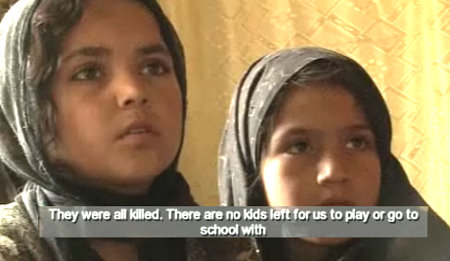
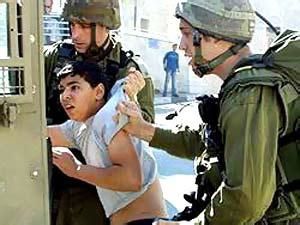

![Géopolitique : Union transatlantique, la grande menace, par Alain De Benoist [tribune libre] Géopolitique : Union transatlantique, la grande menace, par Alain De Benoist [tribune libre]](http://www.breizh-info.com/wp-content/uploads/2014/06/tafta.jpg)


